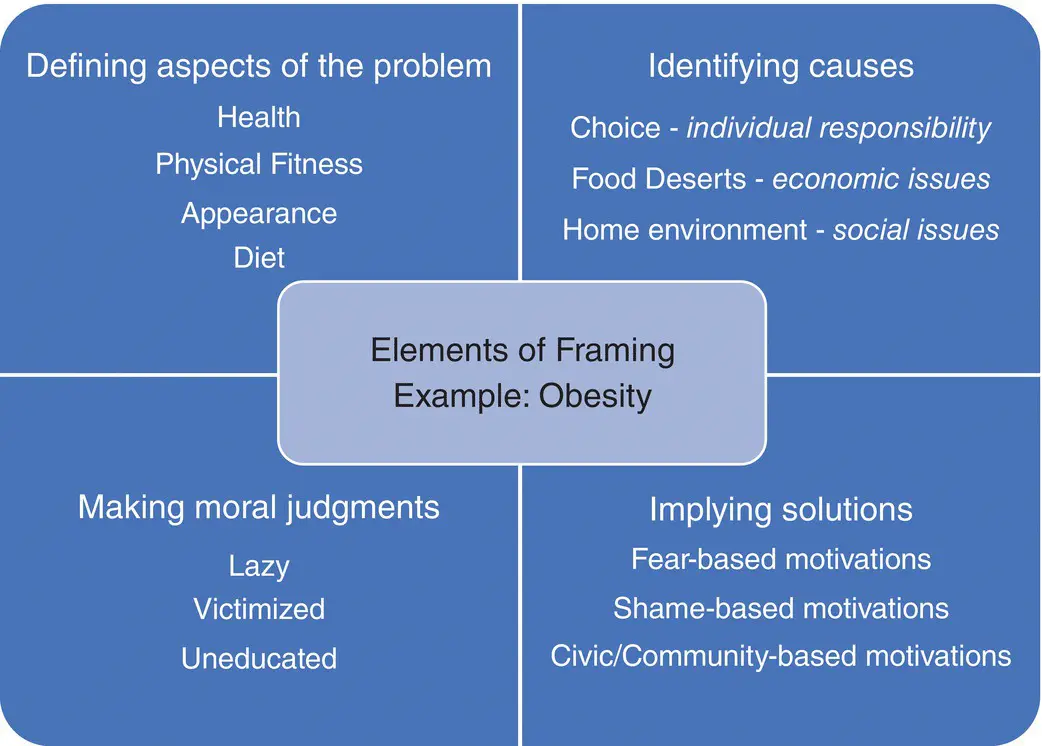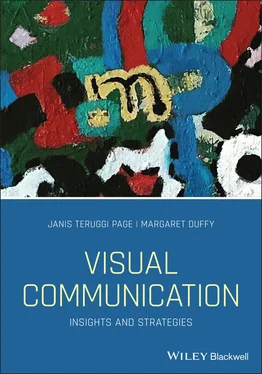Similarly, cropping an image, an everyday activity for photojournalists and editors, might also be considered as a form of manipulation. The not‐for‐profit journalistic publication ProPublica reported on photos and videos taken during the US invasion of Iraq in 2003 (Maass, 2011). Videos and still photos of crowds pulling down a statue of dictator Saddam Hussein in a public square rocketed around the world. News organizations reported it as revealing the US victory and the Iraqi people's joy at the defeat of a ruthless dictator. The close‐up shots seemed to show a jubilant crowd of Iraqis and US soldiers as they slung a rope around the statue and dragged it from its pedestal: a potent symbol of Saddam himself being toppled from power. But a more distant shot, without benefit of cropping, shows only a scattering of people in a mostly empty square, an image that likely would convey a different meaning from the tight rendering. The choice of the more dramatic image may misrepresent the event it is supposed to document.
The Saddam statue cropping is an example of visual framing. Framingtheory offers us a way to understand how messages communicate different meanings. A frame, whether it's expressed verbally or visually, highlights certain aspects of a phenomenon or event while eliminating or minimizing others. We can't describe everything about any event – there are just too many factors. For example, imagine that you're describing a lunch with a good friend. You had a lively conversation, laughed about some of the funny things that have happened in the past week, and shared some worries about the future. You dined on Japanese food and drank tea. In talking about the lunch with a foodie friend, you might emphasize the meal and show your Instagram photo of the sushi. For a different friend, you might focus on the enjoyment of the laughs and jokes and post a photo of the good time on Facebook. As you can see, it's the same event, but you make choices about what you want to highlight for the person you're speaking with or what was most important to you.
According to Entman (1993), frames have four main elements: (i) defining aspects of a problem, (ii) identifying causes, (iii) making moral judgments, and (iv) implying solutions. For instance, if policymakers and citizens identify obesity as a public health problem that should be addressed, news stories or campaigns can be told with many different frames, and these frames have moral and ethical implications (Figure 2.5). If the message is “you should eat healthy meals and exercise more,” the campaign suggests the individual responsibility frame. With this framing, the problem lies with each person who should have the will and capability to alter his behavior. Such individual responsibility frames, some critics say, unfairly victimize individuals. If the message is “people who live in ‘food deserts’ in urban areas don't have access to healthful foods,” the problem is framed to highlight social or economic issues within cities and towns. Another frame could use fear appeals that graphically show the risks of obesity or even shame appeals. Thus, you can see that morals, judgments, and values imbue all human expression.

Figure 2.5 Example using “obesity” to illustrate elements of framing.
Source: Children's Healthcare of Atlanta/NPR.
Effects of Virtual Reality
Emerging virtual reality technologies have potential side effects because, psychologically and physically, the experiences seem to be so real. Early studies already suggest that people's beliefs and ideas are affected by a virtual reality experience. For example, in an environmentally focused experiment where subjects “virtually” cut down a tree in a single episode, participants were more likely to use fewer paper towels to clean up a spill later (Nicas, 2016). Other media and filmmakers have produced work that has had individuals experience traumatic situations such as bombings, a diabetic coma, and even the aftermath of being in the World Trade Center on 9/11. This melding of experiential and visual stimuli has powerful potential ethical implications. This has to do with the issue of choice – that is, we as human beings can choose to use and apply a technology – or not.
Visual Metaphors and Ethics
We all use metaphors every day, mostly without giving them much thought. We say things like “he saw the light” meaning that someone came to understand something, or “in a nutshell,” meaning that someone is about to briefly summarize a concept or event. We say, “don't shoot the messenger,” “that's the elephant in the room,” and “that's a slippery slope.” Lakoff and Johnson (1980) suggest that “the essence of metaphor is understanding one thing in terms of another” (p. 5) leading us to different ways of interpreting a message. You’ll read more about visual metaphors in Chapter 5.
Brand Mascots and Celebrities
Brands frequently use mascots and celebrities as metaphors for the benefits of their products and services. You may have heard of Q Scores, a research service that measures the appeal of various sports figures, movie stars, and musical performers. The appeal is largely powered by photos, images, and drawings. Even cartoons and images of dead celebrities can be persuasive – learn more on the Q Scores website. 1 For instance, the mascot for Kellogg's Frosted Flakes cereal is Tony the Tiger, now over 60 years old, and Tony has a Q Score.
Many critics think it is unethical to use cartoon characters, like Tony, to sell products, particularly products, such as sugary cereals, aimed at children. “Joe Camel,” a cartoon character promoting Camel cigarettes, ran in ads and other venues from 1988 to 1997. Research showed that even young children recognized the character. There is evidence that R.J. Reynolds tobacco company specifically sought to entice younger people to smoke (Stanford, n.d.). Joe Camel was portrayed as cool and smooth: a metaphor pointing the viewer to the idea that Camel cigarettes and their users were desirable and that consuming the product was a smooth and pleasurable activity.
Two insurance company mascots, GEICO's gecko and Aflac's duck, are among the most popular spokes‐characters in the last 30‐plus years (Phillips, 2014, p. 156). Both characters have scored in the top 10 in terms of Q scores, with fans on social media and appearances on late night comedy TV shows. If a compelling metaphor for a presumably safe product leads to product awareness and a sale, that is a good outcome. On the other hand, if it would lead a vulnerable consumer such as a child to feel more positively about using a dangerous product, then that would indeed lead to an ethical breach.
Favored Strategy in Advertisements
There are lots of metaphors in advertising visuals. A running shoe ad that shows the shoe bursting into flames suggests that the wearer will run extremely fast. An ad for light beer may show a glass full of beer in the shape of a light bulb. Research shows that visual metaphors are often highly persuasive in advertising and contribute to people's quick understanding of complex ideas (Jeong, 2008). In addition, the persuasive messages made through visual metaphors appear to encourage greater agreement than with verbal or textual messages. Thus, to illustrate another common metaphor, using images to persuade may be a double‐edged sword in that they can be deployed for a variety of goals and intentions. As you can see, the metaphors we use are an important part of framing our messages.
Читать дальше













